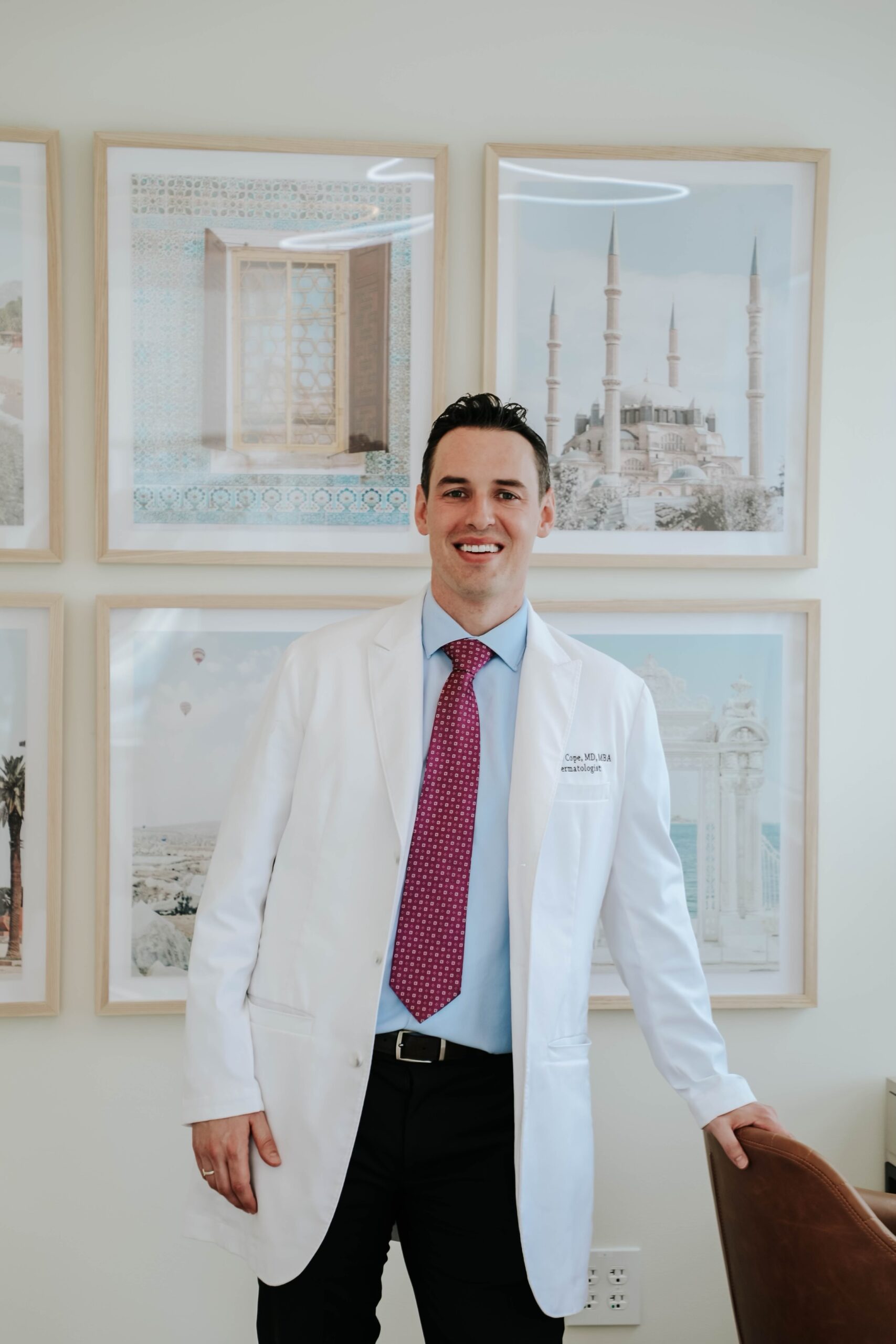- ABOUT US
- CONDITIONS
- TREATMENTS
- Injections
- Botox
- Sculptra
- Topicals
- Sun Protection
- Strong Retinol
- Antioxidants
- Lasers & Devices
- Bela MD Facial
- Intense Pulsed Light (IPL)
- Laser Hair Removal
- Microneedling
- Pinpoint Electrocautery
- Platelet Rich Plasma (PRP)
- RF Microneedling
- Medical Dermatology
- Benign Skin Growth
- Cryosurgery
- Medical Skin Exam
- Gallery
- Pricing
- Contact Us
Quick Links

Rosacea can be a lifelong challenge to your confidence. At Cope Cosmetic Dermatology, our team can help you achieve relief with a variety of treatment options.
What Is Rosacea?
Rosacea is a skin condition that causes visible redness and blood vessels in certain areas of the face. It’s different from normal facial redness (after exercising, for example) and can even be severe enough to include breakouts and rash. Rosacea typically occurs in flareups which can be triggered by a variety of sources.
Rosacea is very common and affects mainly lighter-skinned women between the ages of 30 and 50 (especially those with a family history). However, people of all ages, genders, skin types, and ethnicities can get rosacea.
Types of Rosacea
Subtype 1
Subtype 1 produces symptoms like flushing and redness in the center of the face accompanied by inflammation, sensitivity, and visible blood vessels.
Subtype 2
Subtype 2 produces acne-like breakouts with redness, oiliness, sensitivity, and visible blood vessels. It can also cause raised skin patches called plaques.
Subtype 3
Subtype 3 is rare and can produce bumpy, thick skin on areas like the nose, chin, forehead, cheeks, and ears. It can also cause visible blood vessels, visible pores, and oily skin.
Subtype 4
Subtype 4 affects the eyes and can cause dryness, wateriness, and itchiness around the eyes. It can even impact vision and cause cysts.
What Causes Rosacea?
The underlying causes of rosacea are not completely understood. Some theories include that it’s an autoimmune response, an infection caused by small bugs or skin mites, or even a response to specific proteins in the skin. We do know that rosacea tends to run in families and you’re more likely to have rosacea if a family member also does.
Rosacea flareups are caused by a variety of sources and some of the common ones include:
- Stress
- Heat
- Skincare, hair care, and makeup products
- Heat, cold, and wind
- Caffeine
- Sunlight
- Exercise
- Medications
- Alcohol
- Spicy foods
What Are My Treatment Options for Rosacea?
Your first step in rosacea treatment is finding your specific triggers and figuring out ways to avoid them. Secondly, your board-certified dermatologist can help you create a rosacea-friendly skincare regimen to use at home. There are a variety of prescription medications that can reduce redness, as well as professional laser treatments. IPL, or intense pulsed light, is one of the most effective ways to reduce redness with rosacea. Our team will create a personalized treatment plan for your skin’s needs.
Maintaining Healthy Skin with Rosacea
Preventing flare-ups is the most important step with rosacea. You should wear SPF 30+ daily to prevent sun damage and preserve the results of your laser treatments. Additionally, take steps to avoid your triggers and ensure you take a gentle approach to skincare. Finally, make sure to see your dermatologist if you continue to experience flare-ups so you can explore other possible triggers and treatment options.

DR. AUSTIN COPE, MD, MBA
Born and raised in Utah, Dr. Austin Cope is a highly trained and passionate cosmetic dermatologist dedicated to helping you age gracefully. At Cope Cosmetic Dermatology, our team is here to ensure that you not only look your best but also feel confident and empowered in your own skin.
SCHEDULE AN APPOINTMENT
Ready to feel more like yourself again? Dr. Cope combines expert care with a relaxed, personal approach to help you age gracefully and regain your confidence. Let’s create a personalized plan just for you. Reach out through our online form or give us a call.
385-273-1007 SCHEDULE

